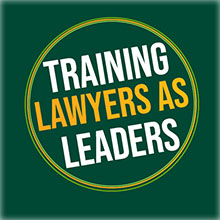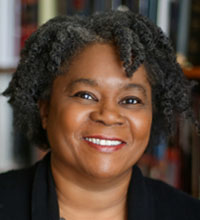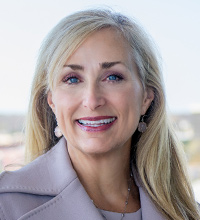By Leah Teague

Leadership Development Syllabus Series ⢠Part 1: Introduction
One of our goals for this blog is to advance the conversation of teaching leadership in law schools. We offer this blog-post series about specific parts of our Leadership Engagement and Development Course to hopefully spark ideas and further conversation. We begin with the top three things weâve learned over the last five years teaching this course.
First, engaging the students calls for more experiential learning and effective use of guest speakers.
The first year, we used a more traditional pedagogy, assigned heavy readings and relied on a Socratic method to engage the students with the readings. We quickly discovered this material called for a different approach if we want students to internalize the topics and embrace it as a journey of self-discovery and growth.
We knew bringing in speakers would be beneficial. Our guest speakers are assigned to cover specific topics and asked to provide context to the concepts. They help the students see application of the concepts within a real-world professional setting. Students more easily envision themselves in those situations someday, and they connect with those lawyer leaders.
In the beginning, we scheduled guests near the end of the course. Over the next few years, we experimented with how many guest speakers and when. We found it best to have the two of us lead off the first week with an introduction to leadership and an overview of the class. After that, we try to bring a speaker for one of the two meetings each week. We purposefully invite speakers to cover specific topics. We recognized that is a lot of guest speakers so we set the syllabus early. We send the syllabus and assigned reading to each speaker so that he or she can see where we started, what weâve covered, and how his or her topic fits into the overall picture. From there, each speaker chooses how to cover the topic and work his or her personality and stories into the material. Students like this weekly balance and they enjoy hearing from practicing lawyers and leaders. It is also a great way to connect with alumni!
Early on we shifted to a more experiential approach. Even during the sessions when we simply lead a discussion on a topic, we want the students to âstruggleâ with the material at least to a certain degree to create ownership of the material. We also constantly relate it to real-world situations. For example, after a discussion on dealing with the media, we run a mock press conference where students either assume the role of a media correspondent or the general counsel for a company in crisis. The students apply what theyâve learned in a controlled environment.
Second, the best class sessions include meaningful discussion among the students.
As noted above, we started with a more traditional pedagogy but the students were not engaged in thoughtful interaction. As a result, many students struggled to internalize the material and they could not identify how the information would be useful in the future. In other words, we were ineffective in leading them on a personal journey of self-discovery and growth.
Now, we are mindful of the need to include plenty of opportunity for students to actively engage with the material during class and after. If we donât have time for, or if a topic doesnât lend itself to, an exercise, we involved the class in small and large group discussions. We have a better balance of techniques leading to much better results. We hope we are helping them establish a life-long practice of intellectual curiosity and creative problem solving.
Third, journaling is essential.
When we created the class, neither of us believed in the power of journaling. With that said, since we did not believe that an exam was appropriate for this class, we required a journal to ensure that our students were getting through the material and completing the assignments. That first year, we did not see their journal until the end of the class.
We have seen the light! We now firmly believe that journaling is critical to a studentâs development and growth. We tailor the journal prompts after each class to connect with the conversation in class and desired outcomes. Students must post journal entries to their personal Box file before the next class so that we can review. This enables us to determine if they are learning what was intended and allows us to make adjustments as appropriate. It provides the students a mechanism for wrestling with concepts and exploring the application to their lives. We hope our students create a habit of continual self-assessment and development.
-LT




